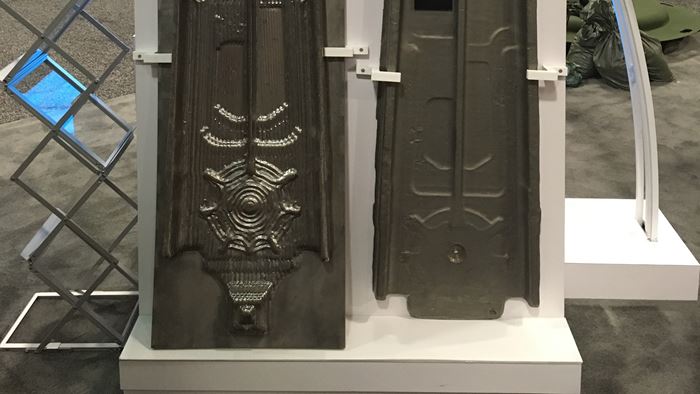Arconic Offers Hybrid Ampliforge Process for High-Performance Aerospace Components
Rapid 2018: The Ampliforge technique combines 3D printing with manufacturing processes such as forging to increase toughness, fatigue and strength.
Arconic showcases its Ampliforge process, a hybrid technique that the company says combines the advantages of additive manufacturing and advanced forging processes.
Using the Ampliforge process, Arconic designs and 3D prints a near-complete part, then treats it using an advanced manufacturing process, such as forging. According to the company, this process enhances the properties of 3D-printed parts, increasing toughness, fatigue and strength versus parts made solely by additive manufacturing. The resulting parts have properties that meet existing forging specifications for strength, fracture toughness, fatigue and metal integrity, while offering with tooling costs, fewer forging operations and better utilization of raw material.
The Ampliforge process reduces material input and production lead times, expanding the range of aerospace applications for AM to include larger aerospace parts, such as the spars pictured.
Related Content
-
Video: For 3D Printed Aircraft Structure, Machining Aids Fatigue Strength
Machining is a valuable complement to directed energy deposition, says Big Metal Additive. Topology-optimized aircraft parts illustrate the improvement in part performance from machining as the part is being built.
-
JuggerBot 3D Chooses Research Partners for Air Force Large-Format Hybrid Additive Manufacturing Project
Oak Ridge National Laboratory and Mississippi State University’s Advanced Composite Institute have been selected to assist in the research and technical development of production workflows using thermoplastic and thermoset deposition.
-
Video: Intelligent Layering Metal 3D Printing at 3DEO
Contract manufacturer 3DEO delivers metal parts using Intelligent Layering, a binder jetting-like 3D printing process the company developed and operates internally. Here’s how it works.













